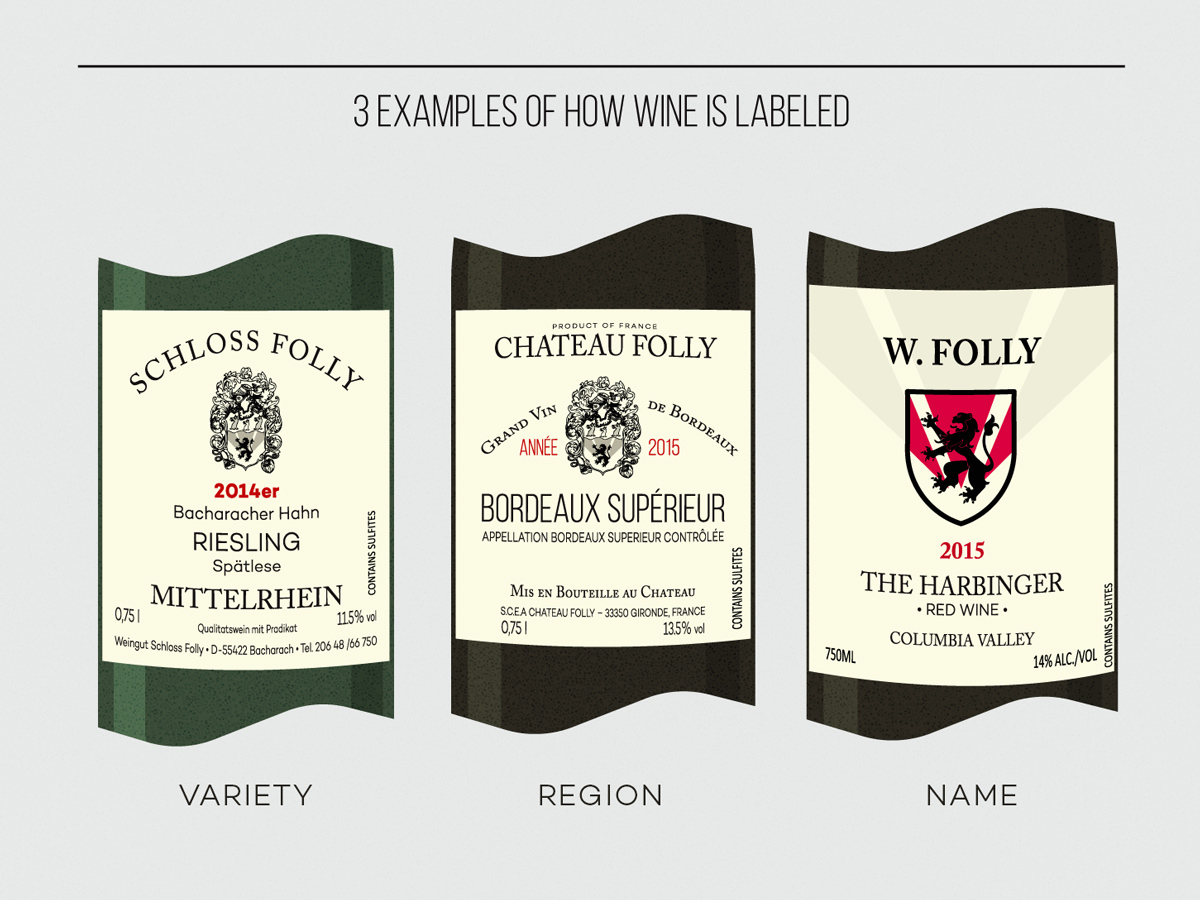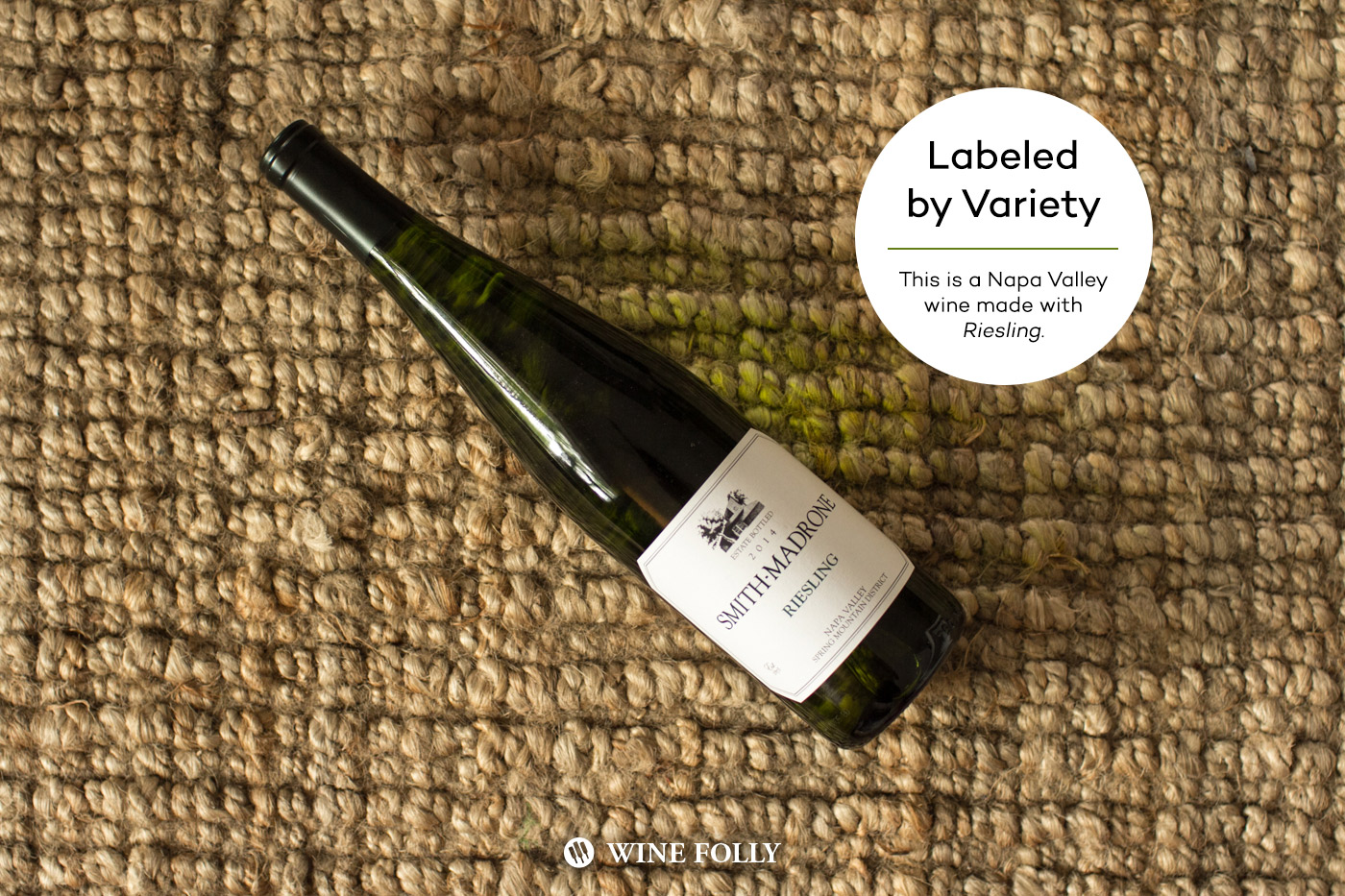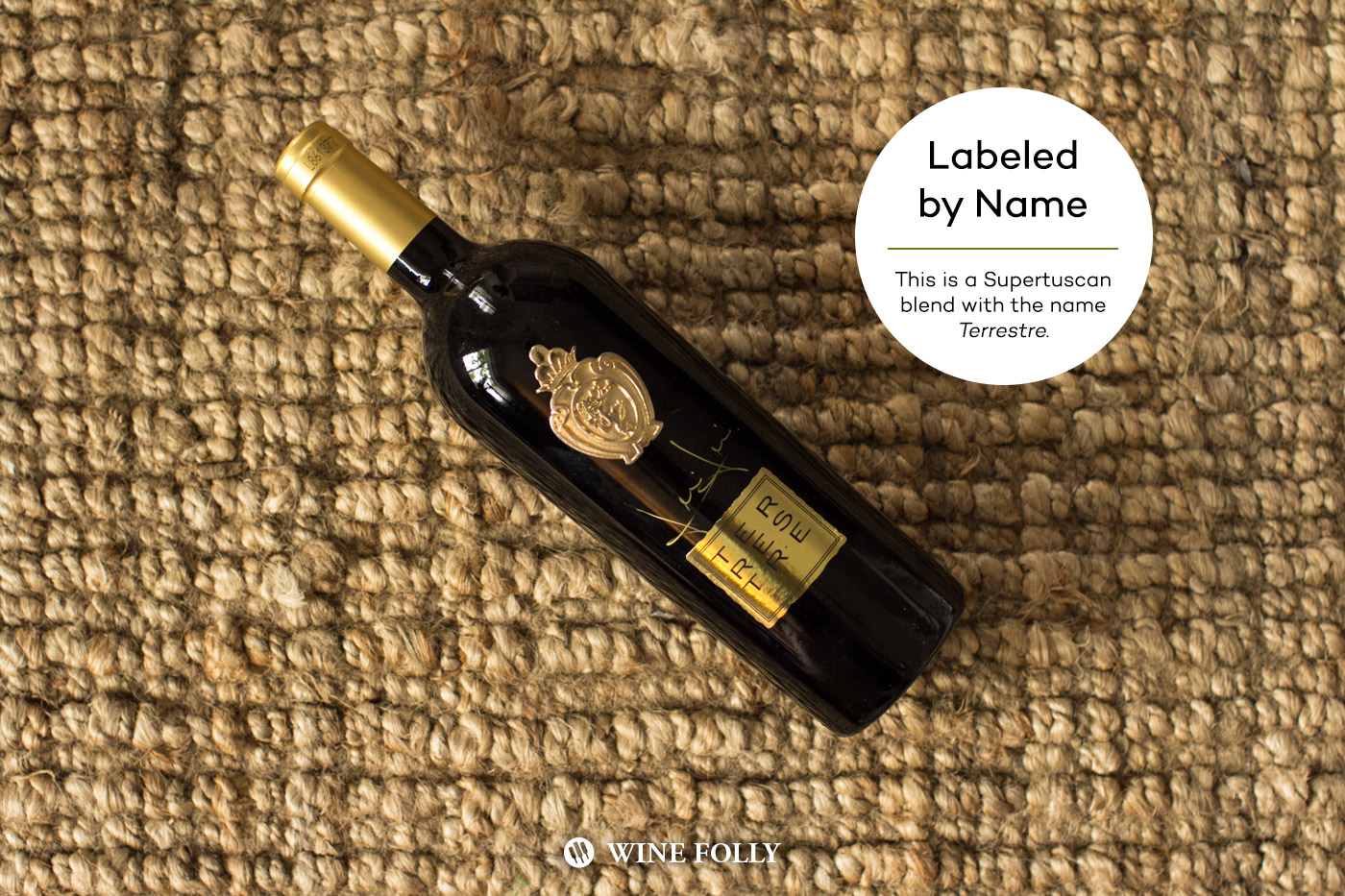Once you know this simple trick, you won’t be frustrated by a restaurant wine list ever again. Here’s the secret: all wines are labeled in one of three ways.

3 Useful Tips on Reading Wine Labels
Some Wines are Labeled by Grape Variety
When you see a wine labeled with “grape” words like Cabernet Sauvignon or Albariño, then it’s labeled by grape variety. There are hundreds (actually, thousands) of different wine varieties and it’s possible to label a wine with more than one grape.
What Varietal Labeling Tells You
Wine labeled by variety doesn’t guarantee that the wine is 100% of the listed variety. Each country has their own set of minimum requirements to label wine by variety (Surprisingly, the United States has the lowest!):
- 75% USA (except for Oregon which requires 90%)
- 80% Argentina
- 85% Italy, France, Germany, Austria, Portugal, New Zealand, South Africa, Australia, United Kingdom
Some Wines are Labeled by Region
(aka “vin de terroir”) Wines like Bordeaux, Chablis, Chianti, Sancerre, and Rioja are labeled by region. This style of labeling is used mostly in old world wine countries like France, Italy, Spain and Portugal. Regional labeling likely came from a time when many different varieties grew together in the same vineyards and were blended together into wine.
What Regional Wines Tell You
Each wine region dictates what grapes can be used in the regional wine. So, in order to know what’s inside one of these regionally labeled wines, you’ll want to do a little research. For example, Chablis in France grows Chardonnay, and Chianti in Italy specializes in Sangiovese.
Some Wines are Labeled by Name
The last common style of wine labeling includes wines using a made-up or fantasy name. More often than not, named wines are unique blends invented by the wine producer. You’ll also find named wines common in regions that do not allow the use of certain grapes in their regional wine (but still grow them). For example, Tuscan wines made with French-origin grapes including Merlot, Syrah, and Cabernet are not allowed to be labeled as an Italian regional wine. (This is how the first Super Tuscan wines came to be!)
What Named Wines Tell You
Named wines are often blends or unusual wines that don’t fit the wine laws of a particular region. In most cases, you’ll find the unique details about the wine on the winery’s website.


